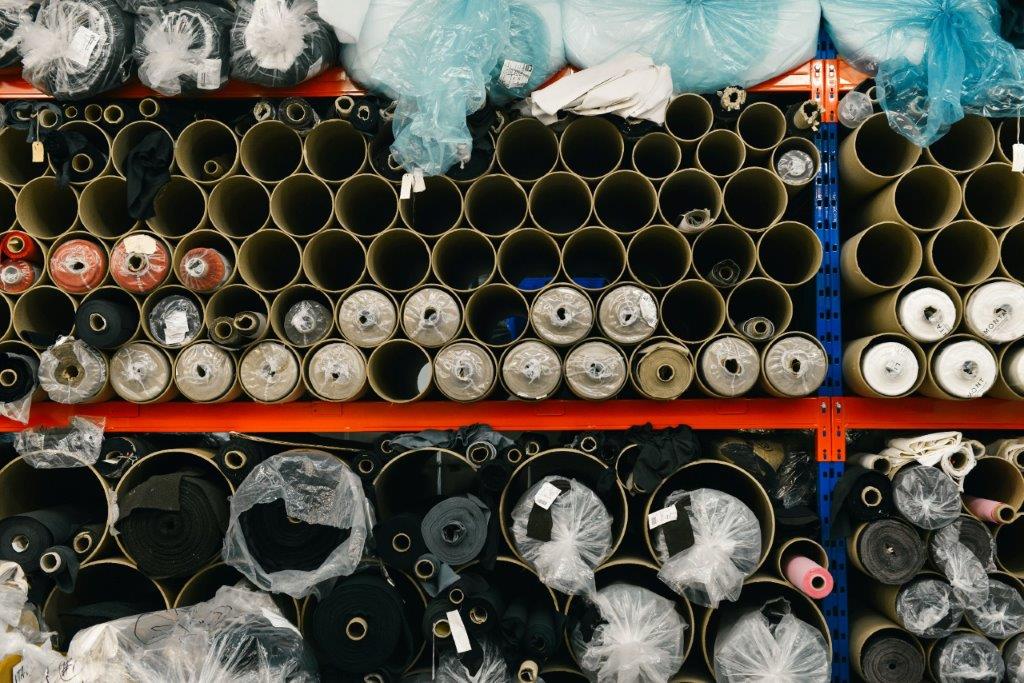Blog
Find out the materials used in the textile industry and their impact on the environment
- by: Verney - Sustaintable Shoes
- Marcas
You probably know that the textile industry is one of the most polluting industries in the world. It is actually the second most polluting industry, preceded by the petroleum sector.
If we talk about numbers, according to WWF this industry emits about 1.7 billion tons of carbon dioxide annually. Can you imagine the impact of this on the environment? That’s right, it’s unimaginable.
One of the main reasons for this is due to the materials used in the textile industry. The materials used go through a long process that leaves a significant impact on the environment.
However, not everyone knows what is hidden behind every material used in the textile industry. With this in mind, we have decided in this article to show you a list of very common materials and their impact on the environment.
Wool
Wool is a textile fibre obtain from sheep or other animals. However, the process of shearing sometimes hurts the animals.
After that, the wool is washed and potassium carbonate, hot water, soap, and vegetable oils are added to soften the hair. To become fabric, the wool is twisted and stretched into yarn, which will later be dyed.
Environmental impacts
- The use of synthetic insecticides causes health problems, contaminates soil, water, and fauna;
- Wool production emits a large amount of methane gas;
- To produce each kilo of wool, about 150 litres of water are used.
Rayon
Rayon is a regenerated cellulose fibre that is made from natural sources of cellulose. During de process it is produced from woodchips from trees that have little resin or from the seed of cotton.
Environmental impacts
- Rayon production emits carbon disulfide and hydrogen sulfide;
- For each kilo of rayon, 640 litres of water are used;
- Despite being biodegradable, rayon fabric has low durability and recycling is complicated.
Nylon
Nylon is composed of polyamides, which is a thermoplastic made from petroleum.
Environmental impacts
- Polyamide production contributes to the greenhouse effect;
- To produce each kilo of polyamide, about 700 litres of water are used.
Polyester
Polyester is a polyethylene terephthalate (PET) and is present in several products, such as clothing, paints, varnishes, and others. PET can be obtained from petroleum or natural gas and the polyester in clothes is thermoplastic.
Environmental impacts
- During production, volatile organic compounds (VOC) are emitted;
- PET is recyclable, because it is a thermoplastic, but when it is mixed with natural fibres the recyclability ends up being unfeasible;
- Contamination via microplastics, which end up straying from their fibres and end up in the oceans, damaging ecosystems.
Cotton
After being harvested (usually by machines), the cotton passes through rollers that will remove unwanted materials, such as seeds. These fibres will be stored in bobbins and, after this process, placed in the loom to originate the fabric.
Environmental impacts
- Cotton production is responsible for about 24% of all insecticide consumption and 11% of pesticides in agriculture;
- Compared to synthetic fabrics, cotton consumes more energy, mainly for the fuel used by agricultural machines and the whole process in the factories.
As you can see much of the materials used in the textile industry, especially synthetic fibres, have a negative impact on the environment.
And the big question is, how can we avoid this? Are there alternatives? Fortunately, yes, there are more eco-friendly alternatives! One example of this is slow fashion, whose principles and materials used in clothes and shoes are more sustainable. Some examples of the materials used are organic cotton, recycled fabrics, or alternatives to leather, such as apple peels. Speaking of which, you can find here some Verney models that are made of apple peels and more!
It is estimated that by 2030 global clothing consumption will be around 102 million tons! So, it is urgent that the textile industry changes its bad habits to avoid an environmental disaster. For this, it is necessary that first of all consumers know the reality, are aware of their choices and change them.
Let's all make better choices and contribute to the health of our planet!
Subscribe to our Newsletter
Receive all our news and promotions!



